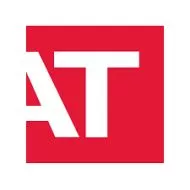The London markets have proved to be a popular listing venue for many overseas companies over the years. A listing on one of the principal markets in London brings with it access to a deep and wide pool of capital and the ability to raise a company's profile internationally. The U.K. offers a range of markets with different levels of regulation and prestige.
Of late, the number of companies from the U.S. and Canada that have secured a listing in London has increased and now forms the largest source of overseas equity listings. One of the great benefits offered to companies coming from the U.S. in particular is that they can access the capital markets at a much earlier stage of their development than on the U.S. markets, given that the average market capitalisation of listed companies on the various exchanges is significantly less than those in the U.S. So, for example, in recent years the average market capital of a company at the time of listing on AIM, London's principal growth market, is around $120 million as opposed to around $1 billion on NASDAQ. In addition, the cost of listing a company in the U.K. is usually significantly less than the U.S. For these reasons, some North American companies may use the London markets as a steppingstone to a subsequent listing in the U.S.
In this note we will look at the key considerations for U.S. companies when seeking a listing in London.
Suitability of the Company for Listing and Choice of Listing Venue
One of the early decisions to be made will be the most suitable exchange on which the U.S. company should seek to list in London. There are three principal markets operated by the London Stock Exchange:
- The Premium Segment of the Main Market of the London Stock Exchange: This is the most prestigious exchange in London that houses blue chip and other larger companies, and which is designed for established companies that meet the U.K.'s highest standards of regulation and corporate governance. A premium listed company must have a minimum market capitalisation of at least £30 million (approximately $40 million) and minimum three-year track record of historic revenue earning record which supports at least 75% of the company's business for that period when first admitted. This segment also allows dual classes of shares to be listed (see below for further details).
- The Standard Segment of the Main Market: This market offers a more flexible regime for smaller and mid-sized companies. A standard listing can be an efficient way for companies to access capital to fund their growth, whilst benefiting from the enhanced profile and liquidity within a well-governed and regulated market structure. A standard listed company must also have a minimum market capitalisation of at least £30 million (approximately $40 million) at the time of listing, but it does not need to have a minimum track record. This segment also allows dual classes of shares to be listed.
- The AIM Market: This is the London Stock Exchange's growth market, which is aimed at earlier stage growth companies. There is no need for the company to have a track record or a minimum market capitalisation at the time of listing. Dual classes of shares cannot be listed on AIM.
Group Structuring
It is important to decide on the best structure for the U.S. company's group ahead of listing. In addition to any preferences there may be from an operational perspective, the decision on the final group structure is likely to be determined on tax and marketability considerations.
U.S. companies can list their stock directly (through a listing of depositary interests/receipts representing the underlying securities of the U.S. company) or, alternatively, indirectly through the insertion of a U.K. or offshore registered company (topco) on top of the existing U.S. company and with the shares (stock) in the topco listed instead. The benefit of listing a U.K. topco in this way is that it will be more familiar to U.K. investors and they will already be aware of the legal protections afforded to them from investing in this type of entity. In this sense, a U.K. topco will be easier to market to potential U.K. investors. However, U.S. companies do still opt to follow the direct listing route, in which case it will be necessary for the constitutional documents of the U.S. company to be amended in order to provide investors with the protections that they would typically expect from investing in a U.K. company.
Tax Considerations
When evaluating whether or not to use a U.S. or U.K. company as the listing vehicle, it will be important to determine whether or not U.S. “anti-inversion” rules will apply. An inversion occurs when a non-U.S. company acquires all of the shares (stock) of a U.S. corporation, with the result that the U.S. corporation is removed from the reach of the U.S. corporate tax system. The anti-inversion rules are designed to deter such inversions by subjecting the U.S. corporation, its shareholders and insiders to U.S. taxation. In effect, the insertion of a non-U.S. topco onto a U.S. corporation could result in the topco becoming subject to taxation in both the U.S. and the overseas jurisdiction in which the topco is based, and the reduction of certain tax benefits of the inversion transaction that otherwise would have been available had the inversion not occured . Furthermore, dividends paid by the non-U.S. topco to non-U.S. shareholders may also become subject to a U.S. withholding tax as if they were paid directly from the U.S. corporation. Whether or not an inversion of the U.S. corporation takes place will depend on the profits achieved at the topco level and the percentage of voting power and the value of the shares in the topco that are held by U.S. persons after the acquisition of the U.S. corporation takes place. As part of any restructuring of the group, it will be important to ensure that existing shareholders in the U.S. corporation do not suffer any adverse tax consequences as a result of the restructuring.
Accounting Matters
The historical financial information included in the prospectus (prepared in connection with a listing on the premium segment or standard segment of the Main Market) or admission document (prepared in connection with a listing on the AIM market) on the company's group may need to be converted from U.S. GAAP to IFRS either for marketing purposes or where a U.K. topco is adopted.
Capital Structure
Following a recent review of the listing criteria conducted by the U.K. Government in 2021, it is now possible for dual classes of shares to be listed on both the premium segment and standard segment of the Main Market of the London Stock Exchange. This type of share structure enables a company to issue one class of shares with enhanced voting rights, which are typically held by the company's founders (founder shares), alongside a class of shares with ordinary voting rights (common stock). Founder shares are popular with tech companies listing on the U.S. markets. If this share structure is to be adopted, then the option of listing on the AIM market of the London Stock Exchange will not be open to the U.S. company seeking to list, as dual class shares are not permitted on this exchange.
Management Team and Corporate Governance Requirements
A listed company will need to adopt and comply with a recognised corporate governance code in the U.K., or explain how the company deviates from it. For companies with a listing on the premium segment, this must comprise the U.K. Corporate Governance Code, whereas companies with a listing on the standard segment or AIM market will have more flexibility to adopt and comply or explain against the Quoted Companies Alliance (QCA) code which is aimed at smaller and mid-sized companies and offers greater flexibility in terms of corporate governance requirements.
Whilst there are no hard and fast rules around the residency of members of the board of directors, there is usually an expectation from investors that at least two directors are resident in the U.K.
U.S. Securities Laws
Any offering of securities by a U.S. company will be caught by U.S. securities laws and require registration with the U.S. Securities and Exchange Commission (SEC), given that those laws have ex-territorial effect. Regulation S of the U.S. Securities Act of 1933 offers a safe harbour and exemption from registration for sales of U.S. securities made outside of the U.S., provided that there are no direct selling efforts made into the U.S.
Given that any securities sold outside of the U.S. carry a risk that they may flow back into and be acquired by persons in the U.S., Regulation S sets out restrictions attaching to the issuer's shares on the basis of three categories, being Category 1, Category 2 and Category 3 securities. The way in which the issuer's securities are categorised in this manner will depend on the nexus that the issuer has to the U.S. and the risk of such flowback occurring. Typically, a U.S. issuer will be deemed to have a close nexus to the U.S., and its equity offerings will be categorised as Category 3 offerings, which carry the most restrictive offering requirements in order to qualify for the exemption provided under Regulation S.
These restrictions include a distribution compliance period whereby the Category 3 securities are subject to a 12-month dealing restriction from the time of the IPO. During this period, the holders of the Category 3 securities are prevented from selling their shares back into the U.S. other than in compliance with Regulation S, under a registration statement or pursuant to an applicable exemption under the U.S. Securities Act of 1933. Historically, this would require the Category 3 securities to be issued in certificated form containing a prominent legend indicating the restrictions on resale. However, this obligation did not sit very well with the London Stock Exchange's requirement for an issuer's securities to be settled by electronic means, and therefore the London Stock Exchange introduced procedures enabling Category 3 securities to be settled electronically within a central securities depository (i.e., in the U.K.'s CREST system operated by Euroclear UK & International). These procedures effectively incorporate the old legending, certification and transfer restriction requirements of Category 3 securities into CREST by (a) encoding the securities in CREST with a special identifier so that the transfer restrictions are visible, and (b) requiring CREST members not to engage in any trade in a Regulation S security unless that member has a reasonable basis to believe, after inquiry and confirmation, that the trade complies with applicable U.S. securities laws. There are some nuances with these procedures which will need to be worked through at the outset.
Sometimes, the use of an overseas topco will remove the company from the remit of the Category 3 securities restrictions altogether. A foreign private issuer (FPI) may be able to rely on the less restrictive Category 1 offering exemption of Regulation S. Broadly speaking, an issuer organised in a foreign country will be classified as an FPI unless (1) more than 50% of its outstanding voting shares are held (directly or indirectly) by U.S. persons, and (2) more than 50% of the issuer's executive officers or directors are U.S. citizens, more than 50% of its assets are located in the U.S., or its business is administered principally in the U.S.
Conclusion
The increase in the number of North American companies listing on the London markets of late is encouraging. Whilst effecting a successful listing of a U.S. company will involve some key considerations at an early stage, for those companies that may struggle to gain the visibility through a listing in the North American markets due to their size or stage of development, the London markets could well offer the optimal route.
The content of this article is intended to provide a general guide to the subject matter. Specialist advice should be sought about your specific circumstances.





